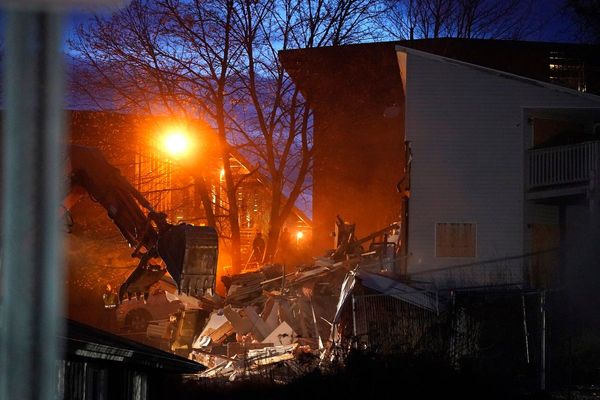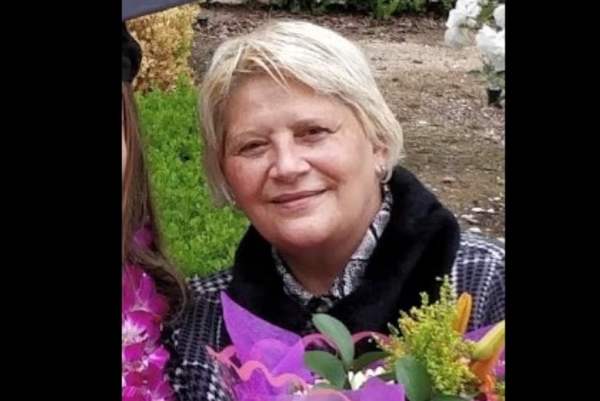
Journalists are just like you — humans who make mistakes. At a time when they’re under increasing pressure, should reporters be writing about each other’s mistakes? That’s the question our debaters are tossing around in today’s Friday Fight.
Arguing in the negative we have shareholder activist and Crikey founder Stephen Mayne, and making the case in the affirmative is Crikey editor Gina Rushton.
Unless you’re a psychopath, and some journalists certainly are, every time you publish a news story you feel acutely aware that someone’s day just got a little bit worse. If you’re doing your job properly, it will have been for entirely defendable reasons and the public now knows something they should.
But even after writing and editing thousands of stories, that anxiety never goes away and nor should it. Journalists have a big responsibility in holding power to account, but we also wield our own power (yes, even scrappy independent outlets like Crikey). That power should be interrogated just as it is in business and politics. To put it simply: if we can dish it out, sometimes we’ve gotta be able to cop it.
The case against doing so is perhaps journalists are under enough pressure with the rapid contraction of newsrooms, the spread of misinformation and the looming threat of AI, so we don’t need to turn on each other and fuel increasing public mistrust of our profession while most outlets are struggling just to survive.
I think those are valid concerns. Every time we issue a correction, it feels like we’ve failed our readers and gambled their trust. And we have — a study just last year found that after people see your corrections, they have less trust in your reporting. But importantly, corrections made by third parties had similarly negative consequences for trust but were less successful in updating people’s knowledge.
In other words, you’re taking the trustworthiness hit anyway, so you might as well actually serve your audience by giving them accurate information and immediately own the mistake before your competitors get around to it.
Last week British journalist Laura Kuenssberg apologised after the BBC cancelled a prime-time interview with Boris Johnson because she accidentally sent the former prime minister her briefing notes “in a message meant for my team”. The decision to quickly and publicly own the mistake demonstrated to audiences that politicians aren’t meant to know what they’re walking into, and that if they are, then it isn’t journalism and shouldn’t proceed. As she put it herself: “Red faces aside, honesty is the best policy.”
For journalism to survive, it needs to let readers inside the newsroom see the good, the bad and the ugly. I’m as romantic as any editor about our craft, but the future of journalism is not in this conceited opacity in which we laud our access and information. The future is in showing our working. This means substantiating our claims, explaining why we’ve reached a conclusion, giving as much information to the reader as we can (without exposing sources or increasing legal risk) and, yes, admitting when we’ve screwed up.
This is, of course, a tall order. Journalists can be petty, self-conscious sooks, self-valorising as the voice of the voiceless when most of us are impacted by just a fraction of the issues we report on every day. But if we’re not prepared to call out our own mistakes, then we deserve a situation in which our peers do it for us.
Mistakes happen all the time. A news outlet that has never made a mistake, never been sued, or never been the subject of debate has likely never taken the risks it should have on behalf of its readers. In this age, it matters more than ever whether an outlet acknowledges and transparently communicates a mistake, issues a correction, take-down or apology. Readers should hope for transparency, not flawlessness, particularly as we demand it from politicians and the business elite.
Often it is the failure to own a misstep (a quiet dodgy headline change or a lack of disclosure on a conflict of interest or sponsored junket) that attracts the social media pile-on or Media Watch segment. I asked Paul Barry, who hosted the program for 11 years, whether he thought the show improves journalistic behaviour. He said it makes journalists more careful in showing them “how not to trip up”.
“Journos often tell me that it makes them think twice about what they were planning to do,” he told me. “Most really don’t want to end up on the program. It’s not good for their career or their self-esteem.”
Most other professions don’t publicise each other’s mistakes — journalists do that for them. So why should news professionals be subjected to this? Most other industries have processes or bodies that ensure accountability. There are also very few penalties for screwing up as a journalist in Australia. We have a toothless Press Council and it is usually only the rich and powerful who can sue for defamation. The least we can do is call each other out and raise the standard for all.
It doesn’t always involve singling individual journalists out. Jane Gilmore spent years pointing out headlines that minimised perpetrator accountability and victim-blamed in stories about gendered violence.
DING! DING! DING! THE CRIKEY EDITOR INFORMS RUSHTON SHE HAS NOW OFFICIALLY PASSED THE MAXIMUM WORD COUNT (YES, THE EDITOR IS BOTH DEBATING AND TIMEKEEPING… THE CRIKEY TEAM HAS BEEN STRUCK DOWN BY ILLNESS THIS WEEK).
Gilmore has written about why she no longer names and shames the journalists’ bylines. Often journalists don’t write their own headlines and you can’t address a sector-wide issue by focusing on individuals. But there are plenty of stories in which it is completely reasonable to highlight an individual reporter’s behaviour. I’m not talking about a junior reporter getting a name wrong — I mean a journalist who has failed tests of ethics, transparency and responsibility or made a bungle that had flow-on effects.
Just this week Crikey published a story about how Sky News Australia host Rita Panahi amplified US election disinformation, resulting in the unleashing of a torrent of threats and harassment aimed at a Pennsylvania couple who appeared in a Kamala Harris campaign ad. This was an election lie spread by an individual that had real-world consequences and it is entirely defendable as a subject of news coverage.
The flip side of this is that reporters should also hold up each other’s reportage when we get it right. Just look at yesterday’s Walkley nominations — Australian journalists are doing incredible work. And yet, having worked for an international outlet where competitors could be collaborators, I reckon we can be a pretty tribal bunch who don’t celebrate each other enough.
DING! DING! DING! THE CRIKEY EDITOR REMINDS RUSHTON SHE HAS NOW OFFICIALLY PASSED THE MAXIMUM WORD COUNT BY MORE THAN 200 WORDS (GET IT TOGETHER, GINA).
We should acknowledge when our competitors get it wrong and when they get it right.
Read the opposing argument by Stephen Mayne.







